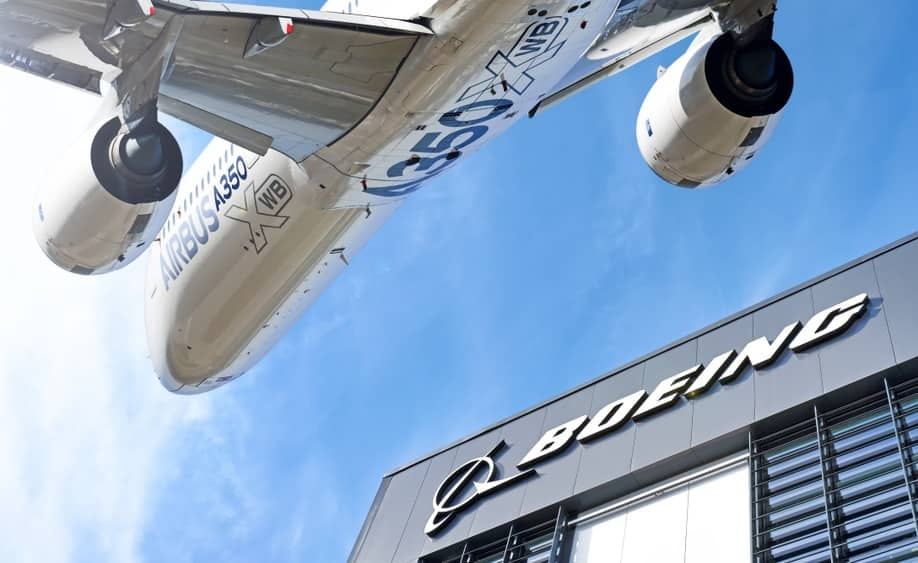With the airline industry making efforts to recover from the impact of the coronavirus pandemic, leading manufacturers in the sector have registered contrasting results in deliverables.
Airbus maintained an upper hand over Boeing (NYSE: BA) as the company attempted to regain ground following scrutiny due to faulty passenger aircraft.
According to data compiled and calculated by Finbold, by the end of 2021, Airbus had delivered 1,376 aircrafts under all categories from the start of the pandemic in January 2020. The figure is about triple compared to the 466 deliveries by Boeing over the same period.
Over the last five years, Airbus has remained the dominant player delivering 3,757 aircrafts, with Boeing trailing at 2,415.
Airbus capitalizes on Boeing’s misfortunes
A breakdown of the specific aircrafts indicates that in 2021, despite the 737 MAX safety concerns, the brand ranked top among Boeing deliveries at 245 units. Elsewhere, A320neo was the leading brand for Airbus. Data on aircraft deliveries are provided by the flight tracker platform Flightradar24.com.
Although Boeing and Airbus are historical competitors, the European manufacturer gained the upper hand during the health crisis, capitalizing on the global grounding and delivery pause of Boeing’s 737 MAX. Despite the 737 MAX resuming circulation, Boeing was unable to catch up.
The pause in deliveries is further complicated because airlines that have waited for over a year for their scheduled deliveries are free to cancel their contract with Boeing.
At the launch, Boeing intended to have the 737 MAX compete with Airbus A321neo. But the halting of deliveries means that the company’s product development timeline is in jeopardy. The resulting impact of the pandemic generally depressed orders for such planes from both manufacturers.
Overall, the pandemic phase was among the worst for Boeing impacting the company’s performance in the stock market. However, analysts project that the resumption of 737 MAX circulation might be a turnaround for the manufacturer. Similarly, the stock also tanked after a Boeing plane crashed in China’s southern province of Guangxi in March.
Boeing’s deliveries recovers slightly
It is worth noting that despite trailing Airbus, Boeing registered an increase in deliveries between 2020 and 2021 after struggling in the wake of the crashes, the pandemic, coupled with other manufacturing issues linked to inspections that halted the handovers of its 787 Dreamliners.
Notably, both manufacturers are still facing several challenges regarding quality. For instance, Airbus has been embroiled in the A350 paint issue with Qatar Airways and other carriers.
This debacle might open the door for Boeing considering that Qatar is among the leading airlines globally with a significant fleet. Furthermore, Boeing is still attempting to settle significant debts while exploring means to deliver clean-sheet aircrafts.
Amid Boeing’s ongoing recovery, the company might be forced to explore other emerging parts of the market that need new jets. As reported by Finbold, Boeing has since pumped $450 million into electric air taxi start-up Wisk Aero as part of expansion and diversification.
The future of Boeing and Airbus
Regardless of the competition, the two giant manufacturers account for a significant number of orders from different customers, thanks to their market position.
The orders have been boosted by the reopening of the economy globally. The accelerating pace of orders at both companies indicates that airlines are confident of strong demand, hoping that the pandemic’s impact will be wiped out in a few years. For Airbus, the orders are positively impacting the stock which is performing better in 2022.
Of interest will be how the global geopolitical issues impact the two companies as they navigate the pandemic recovery. For instance, two manufacturers have also been embroiled in Russia’s invasion of Ukraine. Amid the war, Airbus has joined Boeing to cancel services with the Russian aviation industry.









